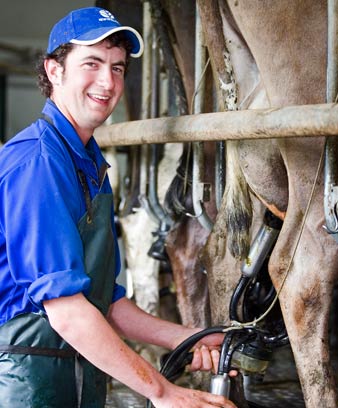He korero whakarapopoto
Early farming
To clear land for farming in the 19th century, workers burnt and ploughed grasslands, cleared bush and drained swamps. Huge sheep runs were set up. Some had many staff, including:
- shepherds, often from Scotland, who lived alone in small huts. They made sure that sheep didn’t wander over the station boundary or get attacked by dogs.
- cooks, usually men, who fed the other workers on mutton, potatoes and bread. They were very busy at shearing and harvest time.
Workers on the move
Some workers moved from place to place to find work.
- Shearers often worked in Australia from June to November, then in New Zealand until February. Māori shearing gangs were common, especially on the North Island’s East Coast.
- Musterers brought sheep down from the high country for shearing in autumn. They worked with teams of dogs, and walked long distances to find all the sheep.
- Rabbiters worked on different farms, usually over winter. They killed rabbits by hunting, digging up burrows and poisoning them.
Grain and crop farms
Grain and crop farms needed:
- ploughmen, who used teams of bullocks or horses to pull the plough
- blacksmiths and saddlers, who worked on farms that had many horses
- threshers, who separated the grain from the chaff and stalks.
On the road
- Wagoners and bullock drivers carried goods to farms and took away produce.
- Swaggers walked around the country, looking for work and getting free meals from farmers.
- Hawkers travelled around selling goods, or offering services such as patching clothes or fixing pots.
Changes over time
During the Second World War, many men were away fighting. Young women went to work on farms, and were known as land girls.
After the war, more science was applied to farming. Farm demonstration workers taught farmers about new methods, and milk testers visited farms to assess milk quality.
Family farms
After farm machines such as tractors and shearing machines were introduced, it became easier for a family to run a small farm. Children often helped, milking cows or feeding chickens and pigs. Some took over the farm when they grew up.
Rural workers today
In the 1920s, about 30% of New Zealand’s workforce had rural jobs – today only about 6% do. These include an increasing number of jobs in horticulture and viticulture (growing grapes for wine), but it is hard work, often for low pay.





